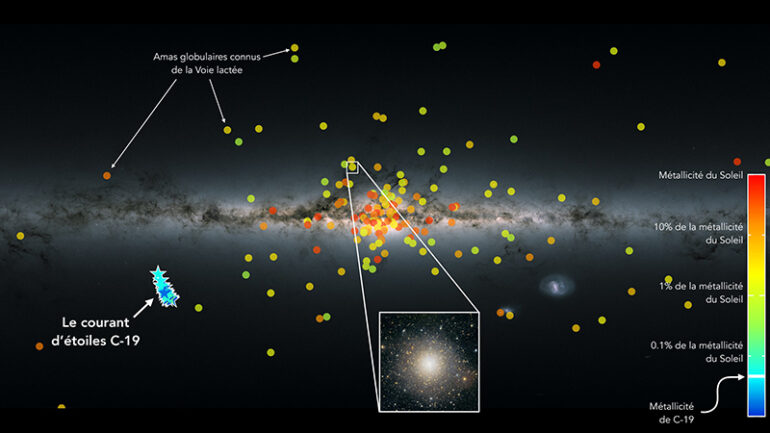The sun is made up of 98.5% hydrogen and helium, two light chemical elements, while the remaining 1.5% consists of other, heavier elements such as carbon, oxygen, and iron. The abundance of heavier elements in a star is called its metallicity, and varies from star to star.
It now turns out that the Milky Way is home to a stellar structure uniquely comprising stars with extremely low metallicity, with a heavy element content 2,500 times lower than that of the sun. This is well below that of any other known stellar structure in the universe.
This discovery, made by an international team led by a CNRS researcher at the Strasbourg Astronomical Observatory (CNRS / University of Strasbourg), and involving scientists from the Galaxies, Stars, Physics and Instrumentation Laboratory (Paris Observatory—PSL / CNRS) and at the J-L Lagrange Laboratory (CNRS / Côte d’Azur Observatory), is published on January 5, 2022 in the journal Nature.
This group of stars all belong to a stellar structure in the Milky Way called C-19. Not only does this discovery challenge our current understanding and models of the formation of these stellar groupings, which exclude the existence of structures composed only of such stars, it also opens a direct window to the very earliest ages of star formation and the development of stellar structures in the very distant past.
Since heavy elements were produced by successive generations of massive stars, the low metallicity of the C-19 stars shows that they were formed only a short time after the birth of the universe.
More information:
Nicolas Martin, A stellar stream remnant of a globular cluster below the metallicity floor, Nature (2022). DOI: 10.1038/s41586-021-04162-2
Citation:
Discovery of the least ‘metallic’ stellar structure in the Milky Way (2022, January 5)
